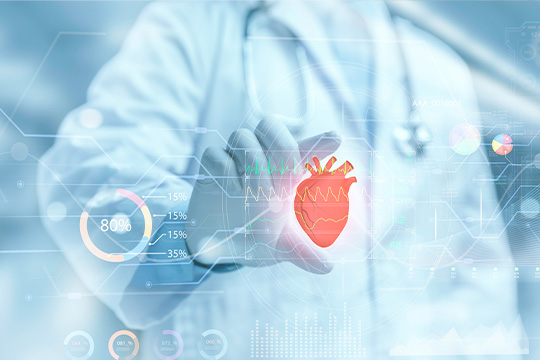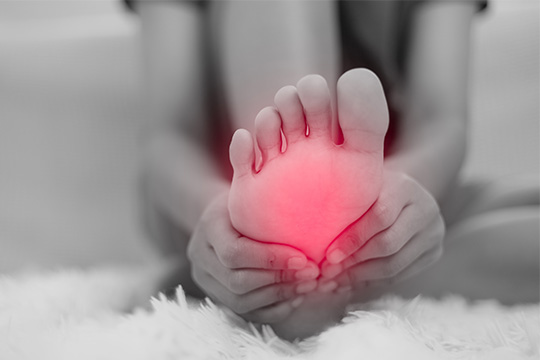Home > Disease and Treatments > Heart Attack – Understanding the Risks, symptoms, and Emergency Care
Heart Attack – Understanding the Risks, symptoms, and Emergency Care
The human heart, a magnificent organ that tirelessly pumps blood throughout our bodies, can face an unexpected and life-threatening event known as a heart attack.
A heart attack, also known as a myocardial infarction, occurs when a part of the heart muscle does not get enough blood. The main cause of heart attacks is coronary artery disease (CAD). A coronary artery spasm, or sudden contraction, is a less common cause, which can prevent blood flow to the heart muscle.
The following health conditions may contribute to heart disease:
High blood pressure
Heart disease is associated with high blood pressure. It occurs when your arteries and blood vessels are under too much pressure. Your heart, kidneys, and brain can be affected by high blood pressure if uncontrolled.
Hypercholesterolemia
High cholesterol can build up in arteries, including the heart. This narrows the arteries and can reduce blood flow to the heart, brain, and kidneys. A person's blood cholesterol is divided into two main types: LDL (low-density lipoprotein) cholesterol, considered bad because it causes plaque buildup in their arteries; and HDL (high-density lipoprotein) cholesterol, considered good because higher levels may help prevent heart disease.
Diabetes mellitus
Blood sugar levels rise with diabetes. Diabetic adults have a higher risk of heart disease death.
Obesity
Fat in excess is the definition of obesity. It has been found that obesity increases "bad" cholesterol and triglyceride levels and lowers "good" cholesterol. In addition to causing heart disease and high blood pressure, obesity also contributes to diabetes.
Risk Factors:
- modifiable risk factors (smoking, poor diet, lack of exercise) and
- non-modifiable risk factors (age, family history, gender).
Heart attack symptoms a person may experience:
Here are some typical symptoms of a heart attack
- Discomfort or pain in the chest. It can feel like a tight ache, pressure, fullness, or squeezing in the chest.
- Pain in the upper body. The pain may spread to the shoulders, arms, back, neck, teeth, or jaw.
- Having stomach pains. There may be pain in the belly area that feels like heartburn and may extend downward.
- Shortness of breath. It may seem hard to breathe. Often, this occurs before any chest discomfort. Everyone doesn’t feel chest discomfort.
- Anxiety. It’s possible you feel like you’re having a panic attack without any apparent reason.
- Lightheadedness. Besides chest pressure, you may also feel dizzy or faint.
- Sweating. Cold, clammy skin may make you sweat suddenly.
- Nausea and vomiting. Feeling sick or vomiting may occur.
- Palpitations in the heart. Your heart may skip beats, or you may just be very aware that it is beating.
Understanding the Emergency:
- If you suspect someone is having a heart attack, and they are unconscious, call an ambulance or go to the nearest hospital. Next, make sure the person is breathing and has a pulse. If the person is not breathing or does not have a pulse, cardiopulmonary resuscitation (CPR) should begin.
- In case you are untrained in CPR, do hands-on CPR. This means pushing hard and fast on the person’s chest – about 100 to 120 compressions per minute.
- If you are trained in CPR, start with 30 chest compressions before giving two rescue breaths.
Diagnosis and Tests:
The following criteria will be used by a healthcare provider to diagnose a heart attack
- History and symptoms
- Blood tests
- Electrocardiogram (EKG or ECG)
- Echocardiogram
- Angiogram
- Heart computed tomography (CT) scan
- Heart MRI
Heart Attack Treatment Approaches: Medications, Oxygen, Angioplasty and Bypass Surgery
To treat a heart attack, blood must be restored as quickly as possible to the affected heart muscle. Medications and surgery can both be used to achieve this. The following methods are extremely likely to be used during treatment.
Supplementary oxygen
People having trouble breathing or with low blood oxygen levels often receive supplementary oxygen along with other heart attack treatments. It increases oxygen circulation in the blood and reduces heart strain
Medications
- Anti-clotting medications: These include aspirin and other blood thinners.
- Nitroglycerin: Nitroglycerin relieves chest pain and widens blood vessels to facilitate blood flow.
- Thrombolytic (clot-busting) medications: These are used only in the first 12 hours after a heart attack.
- Anti-arrhythmia medications: Heart attacks can lead to abnormal heart rhythms called arrhythmias, which can be fatal. These malfunctions can be stopped or prevented by anti-arrhythmia medications.
- Pain medications: Morphine is the most common pain medication given during heart attack treatment. It can help relieve chest pain.
Angioplasty with stent
It is also known as Percutaneous coronary intervention (PCI) which restores circulation to the affected heart muscle. In this procedure, a catheter-based device is inserted into a major blood vessel (usually one in the upper thigh or wrist).
Bypass surgery for the coronary arteries
Patients with severe coronary artery blockages may undergo coronary artery bypass grafting. The procedure is often called open-heart surgery, bypass surgery, or CABG. During a CABG, a blood vessel from another part of your body (usually your chest, arm, or leg) is used to create a detour for blood. Your heart muscle receives blood by rerouting blood around blocked artery sections.
Preventing heart attacks
Several risk factors cannot be controlled, but you can reduce your risk in several ways. These include:
- Maintain a regular medical checkup
- Stop using tobacco products
- Regular exercise is essential
- Maintain a healthy diet
- Keep your weight at a healthy level
- Maintain a healthy lifestyle
- Get rid of stress
- Make sure you take your medications as directed
Disclaimer
This is general information about the disease and treatment options. Please consult a specialist doctor for the right diagnosis and treatment, which may vary based on each patient.
Heart Care at Royal Care Hospital
At Royal Care Super Specialty Hospital, the Department of Cardiology has been successfully performing all cardiac interventions with excellent results. A team-based approach is used to choose the ideal therapy in a given circumstance, considering not only the disease, but also comorbidities, age, family needs, and expectations. Many cardiac patients have benefited from this approach by achieving better outcomes.
Appointments must be made 24 hours in advance.
Book an AppointmentRECENT BLOGS

Cardiovascular disease remains the leading cause of mortality worldwide, accounting for ne...
Read More
Headaches are among the most common ailments people experience, but not all headaches are ...
Read More
Living with diabetes means taking extra care of your health and one of the most important ...
Read More